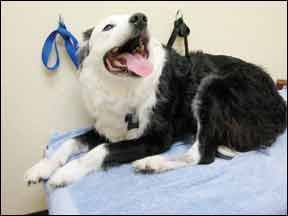From a Traditional Chinese Medicine (TCM) perspective, any medical condition is a symptom of an underlying disharmony within the body. This imbalance can be viewed through the yin and yang model, the base of TCM theory. Both exist within the body at all times. Yin represents the concepts of cooling, fluids, quietness, and passive behavior. Yang represents the concepts of heat, inflammation, outward energy, and aggressive behavior. Healthy animals have a balance between the two; any imbalance is regarded as a disease.

288
Panting can thus be regarded as an imbalance between the yin (the cooling aspect of the body) and the yang (the warming part). TCM attempts to balance the entire system and tailor treatments to individual patients based on constitution, physical findings, and tongue and pulse diagnosis.
Excessive panting might have a dozen or more different treatment plans depending on the primary cause encompassing a medical condition. For example, a dog with a very bright pink tongue but weak pulses is likely yin deficient. If the tongue is red and pulse surging, the dog is likely to be considered as having excess heat. Both conditions will likely be accompanied by excess panting, but would be treated differently with herbs, stimulation of certain acupuncture points, and food therapy.






